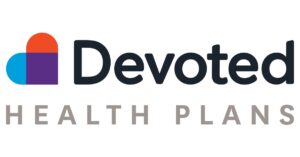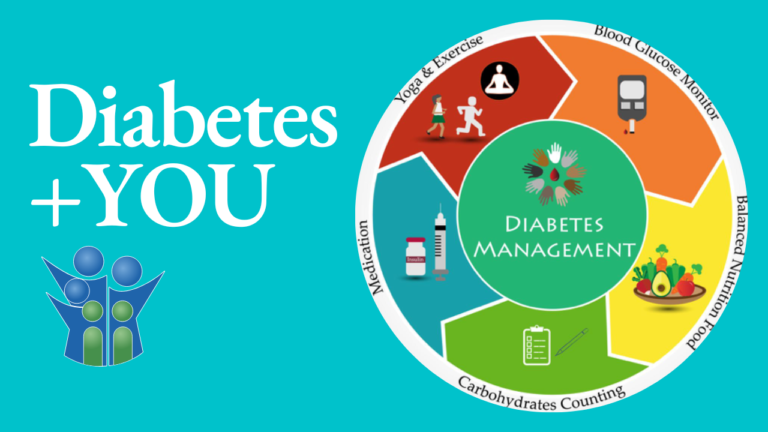We have experienced licensed agents available to help you navigate through all of your healthcare options. We’re here year round to walk you through each step of the process.











If you are a permanent U.S. resident over 65 or are under 65 with certain disabilities or illnesses, you may be eligible for the federally funded health insurance program known as Original Medicare.
If you receive Social Security disability benefits for 24 months, not only are you eligible- you will be enrolled in Original Medicare in the 25th month.
Many people are also automatically enrolled on their 65th birthday and can expect their Medicare cards 3 months beforehand.

We can assess your eligibility and help you apply @ no cost to you! Contact us today >>
You may qualify for full Medicare benefits if you are 64 or under and:
You have received Social Security Disability benefits for 24 consecutive or nonconsecutive months.
You receive a disability pension from the Railroad Retirement Board.
You have Lou Gehrig’s disease.
You have End-Stage Renal Disease (ESRD).
You may qualify to enroll in a Medicare plan during your Initial Election Period:
3 months before your 65th birthday on the month of your 65th birthday and the 3 months after your 65th birthday.
Even if you don’t qualify for full benefits, you can still enroll in Original Medicare at a premium.
If you are 65 or older you may qualify for Medicare and can enroll during the General Election Period:
January 1 – March 31 for a July 1st effective date.
There is also a Special Enrollment Period where certain qualifications or circumstances allow you to enroll outside of Open Enrollment.
Even if you don’t qualify for full benefits, you can still enroll in Original Medicare at a premium.

Medicare was first introduced in 1965 to help make healthcare more affordable and more accessible than ever before.
BUT, the application process can be daunting if you’re not entirely familiar with filing for federal benefits programs. So before you apply, let’s talk about the different parts that make up an individual insurance plan with Original Medicare.
Part A covers hospital insurance for inpatient stays as well as services from a skilled nursing facility, hospice center, and select home service companies.
Most people don’t have to pay a monthly premium for Medicare Part A. This is because you’ve already paid into the system in the form of Medicare tax deductions on your paycheck.
But Part A doesn’t cover everything. You must pay a deductible of $1,556 before Medicare Part A kicks in and starts paying for your care. After that, you can expect Medicare Part A to cover about 80% of inpatient care during that benefit period.
If you are 65 or older, you will be eligible for Medicare Part A if one of the following applies to you:
If none of this applies to you, you can still receive Medicare Part A by paying a monthly premium, so long as you are a legal U.S. citizen or have lawfully lived in the U.S. for at least five years. You will automatically be eligible for Part B Medicare, which covers doctor services if you are eligible for Part A.
Medicare Part B, also called “medical insurance”, covers things like doctor’s visits, mental health services, some preventative care, and more.
Medicare Part B is an optional additional coverage that covers doctor’s services, outpatient care, medical supplies, and preventive healthcare services. Everyone pays a monthly premium for Part B, which usually costs around $170.10 for those new to Medicare as of 2021.
You will also have to make other cost-sharing payments for care, like a deductible, copays, and coinsurance. Similarly, you can expect Part B to pay up to 80% of covered care.
People who are still working or covered by their spouse’s health plan may want to delay their Part B enrollment. However, if you delay your enrollment and do not have creditable coverage, you may have to pay a higher monthly premium as a penalty for not signing up during your initial enrollment period.
What is NOT covered by Original Medicare?
Original Medicare does not cover everything, but at Family Benefit Services you can find extra coverage for the important things, like prescriptions and routine dental care.
If you want to learn about these plans and extra coverage, we are here to help! Contact us today >>
Medicare Advantage plans, also known as Medicare Part C, are an alternative to traditional Medicare offered by private insurance companies approved by Medicare. These plans provide all the benefits of original Medicare, but often include additional benefits such as vision, dental, and prescription drug coverage. There are several types of Medicare Advantage plans, including HMO, PPO, C-SNP, and D-SNP.
When choosing a Medicare Advantage plan, it’s important to consider your healthcare needs, budget, and provider preferences. You should also carefully review the plan’s coverage, benefits, and network to ensure it meets your needs. By understanding the different types of Medicare Advantage plans available, you can make an informed decision about your healthcare coverage.
HMO, or Health Maintenance Organization plans, require you to choose a primary care physician who acts as a gatekeeper for all of your medical needs. In other words, you need a referral from your primary care physician to see any specialist or receive any medical services. HMO plans tend to have lower out-of-pocket costs, but less flexibility in choosing your doctors and providers.
PPO, or Preferred Provider Organization plans, allow you to see any doctor or provider in the plan’s network without a referral. PPO plans tend to have higher out-of-pocket costs than HMOs, but provide more flexibility in choosing your healthcare providers.
C-SNP, or Chronic Special Needs Plans are designed for individuals with chronic conditions such as:
• Diabetes: Click here to read our latest blog, “Diabetes and You: Manage Your Expenses with These Healthcare Plans”

• Heart disease: Click here to read out latest article on heart health!

• COPD: Click here to read our blog article “Understanding COPD and Medicare: Special Enrollment and Cost Savings”

INCOME AND ASSET LIMITS
C-SNP plans provide specialized care for individuals with specific health needs, including tailored care plans and care coordination services.
D-SNP & LIS (Extra Help), or Dual-Eligible Special Needs Plans, are designed for individuals who are eligible for both Medicare and Medicaid. D-SNP plans provide specialized care for individuals with complex medical needs and may include additional benefits such as dental, vision, and hearing coverage. D-SNP plans may have lower out-of-pocket costs than other Medicare Advantage plans. If you qualify for a D-SNP plan, you are automatically enrolled into a LIS program to help with the costs of your prescriptions, commonly known as Extra Help.
If you want to learn about Medicare Advantage plans we are here to help! Contact us today >>
The IEP is the time during which a person who is newly eligible for Medicare may make an initial enrollment request to enroll in Original Medicare, a Medicare Advantage (MA) plan or a Medicare Prescription Drug plan.
For most people, the IEP is the seven-month period that begins three months before you turn 65, includes the month you turn 65, and ends three months after the month you turn 65.
If you don’t enroll in Part B when you’re first eligible, you can enroll between January 1 and March 31 each year, during the General Election Period. However, you may have to pay a late enrollment penalty unless you qualify for a Special Enrollment Period (SEP).
If you delay enrolling in Part B because you have group health coverage based on current employment, you’re entitled to an SEP at any time during which you may enroll in Part B. You may also enroll in Part B during an eight-month SEP beginning the month after your employment ends or the group health coverage ends, whichever happens first, and will usually not have to pay a late enrollment penalty.
Get help with your Initial Enrollment Period @ No Cost To You! Contact us today >>
The Annual Enrollment Period (AEP) is the time each year when you can choose which kind of Medicare coverage you want to enroll in effective January 1 of the following year.
For example, if you want to change Medicare Advantage (MA) plans because your needs have changed, or if you decide to change from a Medicare Advantage (MA) plan to Original Medicare with a Medicare Supplement insurance plan, you may do so during the AEP. Coverage takes effect on January 1 of the following year.

Not sure if you want to change your Medicare plan? Contact us today >>

If you’re not sure whether you qualify for a Special Enrollment Period (SEP) contact us today >>
Certain circumstances may qualify you for a Special Enrollment Period (SEP) that allows you to enroll for Medicare outside of open enrollment. These circumstances include:
Determining which Medicare Parts are right for you is an important decision you make before sending in your application.
Your choice of Medicare plan should be made with your long-term healthcare needs in mind. Our team has helped thousands choose a Medicare plan that was right for them. We can guide you through every step of the process.
Family Benefit Services
NEW PORT RICHEY OFFICE
5644 Main Street, New Port Richey, Florida 34652, United States
Hours
Monday – Friday: 9:30am – 4:30pm
Saturday: 10:00am – 2:00pm
Sunday: Closed
Family Benefit Services
HUDSON OFFICE
11844 US Highway 19 N
Port Richey, FL 34668
Hours
Monday – Friday: 9:30am – 4:30pm
Saturday: 10:00am – 2:00pm
Sunday: Closed
© 2024 Family Benefit Services, “FBS”, is an independent insurance agency and does not represent or is endorsed by CMS or Medicare. FBS complies with CMS guidelines and does not discriminate on the basis of race, color, national origin, age, disability, or sex. For accommodation of persons with special needs at meetings call (727) 848-4963 or TTY 711. All services and appointments are at no cost. To stop receiving communications you can opt-out at any time by calling (727) 849-4963 (TTY 711). Opting out will not impact your ability to receive services. We do not offer every plan available in your area. Any information we provide is limited to those plans we do offer in your area. Please contact Medicare.gov or 1–800–MEDICARE (TTY users should call 1- 877-486-2048) 24 hours a day/7 days a week to get information on all of your options.
FARXIGA
JANUMET
JARDIANCE
LANTUS SOLOSTAR
LEVEMIR FLEX TOUCH PEN
NOVOLIN FLEX PEN
NOVOLOG FLEX PEN
REZVOGLOVR KWIKPEN
TOUJEO SOLORSTAR PEN
HUMALOG KWIKPEN
INSULIN ASPART FLEX PEN
JANUVIA
HUMALOG KWIKPEN
INSULIN LISPRO KWIKPEN
OZEMPIC
TRULICITY
VICTOZA
ALBUTEROL
ANORO ELLIPTA
ARNUITY ELLIPTA
BREO ELLIPTA
FLOVENT DISKUS
FLUTICASONE AEROSOL
QVAR REDIHALER
SERENT DISKUS
SPIRIVA
SYMBICORT
TRELOGY ELLIPTA
If your income and assets fall under these guidelines, you may qualify for the Low-Income Subsidy and Medicare Savings Programs in Florida.
Medicare Savings Program:
Individual: $1640 income / $9090 assets
Married Couple: $2219 combined income / $13,630 assets
Low Income Subsidy:
Individual: $1823 income / $16,660 assets
Married Couple: $2465 income / $33,240 assets
(These limits exclude your primary home and vehicle.)